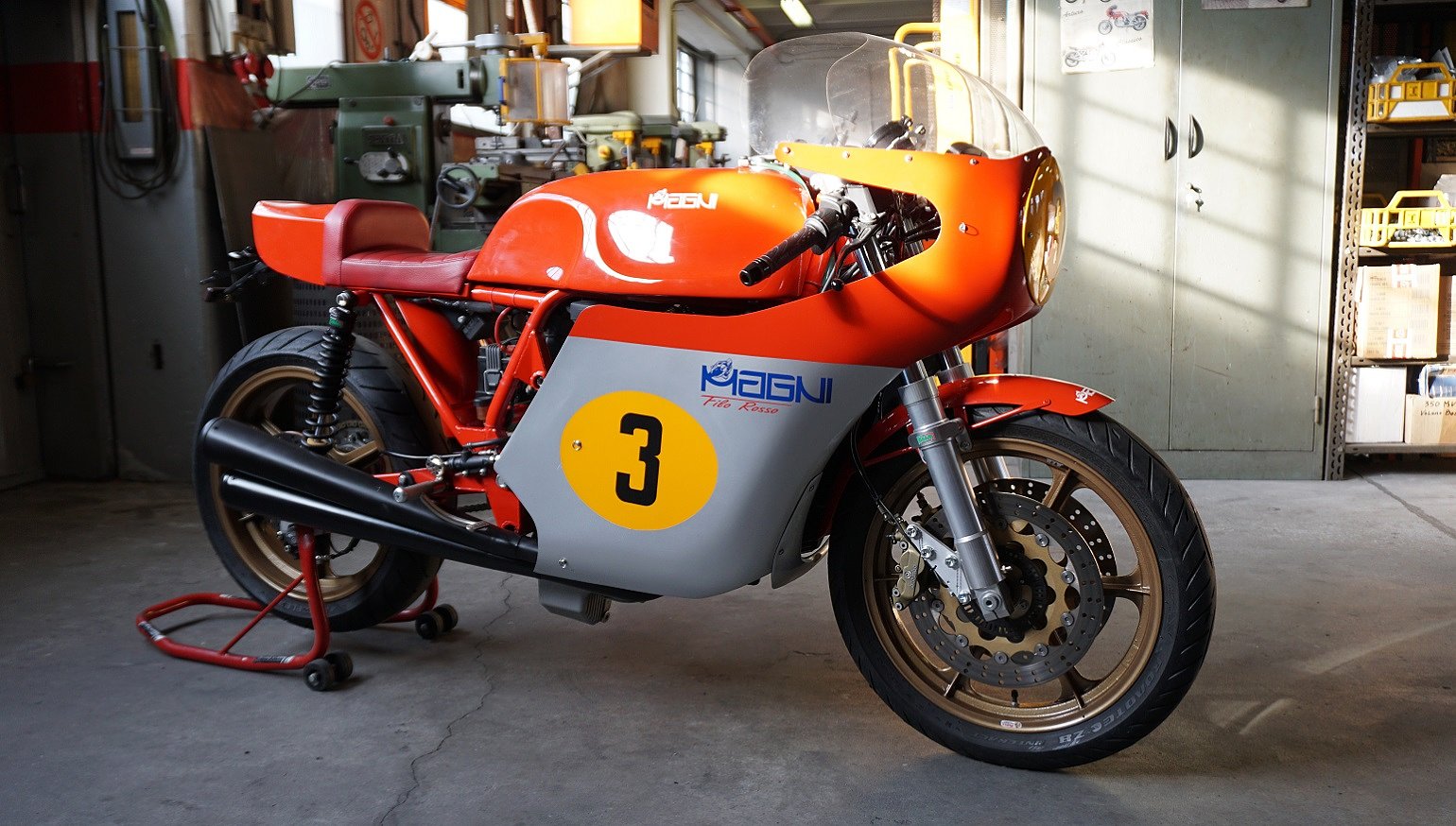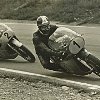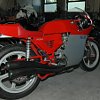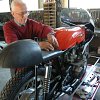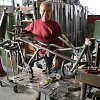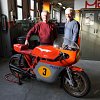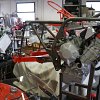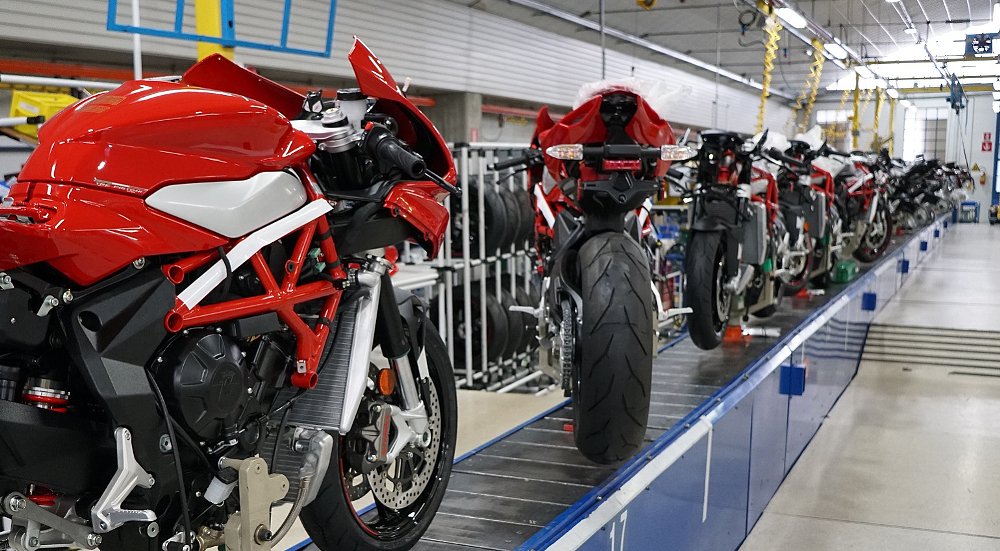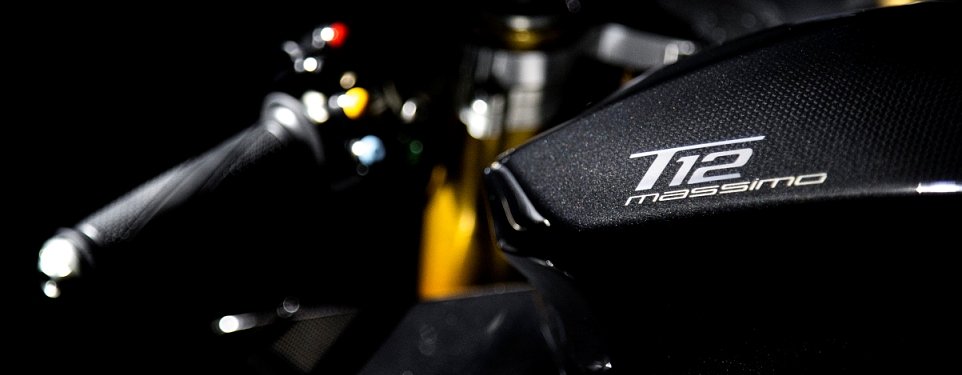Earlier this spring, when I visited the MV Agusta factory in Varese, Italy, I made sure to schedule a free day for a private pilgrimage to Samarate and Cascina Costa – a pair of tiny towns near Milan’s Malpensa airport, where a large portion of motorcycle Grand Prix history was made.
For most of MV’s racing heyday, the race shop was located in MV’s helicopter factory in Cascina Costa. There’s still a neat small museum dedicated to the company there.
Count Domenico Agusta wanted the team based in the helicopter factory, rather than at the nearby motorcycle factory, because it would be closer to his office, where he could keep an eye on things. It also gave the small race team easy access to the helicopter division’s skilled fabricators. Last, but not least, Italy was wracked by labor disputes and strikes in the 1960s, and there was a route into and out of the race shop that allowed the team to avoid picketers!
Consider MV’s incredible race history: countless wins by English legends such as Les Graham, John Surtees, Phil Read, and Mike Hailwood; storied Italians, including Carlo Ubbiali, Tarquinio Provini, and of course Giacomo Agostini.

The riders came, and went, if some factory offered a higher bid for their services. Even Ago abandoned MV in the early 1970s, riding for Yamaha when it seemed their two-strokes were unbeatable. But one man had a hand in all those great MV Agusta race bikes: Arturo Magni.

The beginning of the red thread
Arturo Magni arrived at MV Agusta in 1950. Previously, he’d worked for Gilera, then a dominant racing team. Magni was recruited by another ex-Gileran, Piero Remor, an engineer (and another legendary figure in the racing world.)
Count Domenico charged Remor and Magni with creating a scuderia that could beat Gilera at its own game. Remor ruled the drawing board, but execution was Arturo’s responsibility. Magni supervised fabrication and quality control, recommended riders, hired and assigned mechanics, and served as the field general at races. Magni managed the race team and shop until the mid-1970s, when MV Agusta finally had to admit that no four-stroke could compete with the rising two-strokes.
By then, Count Domenico had died anyway, and MV Agusta had lost much of its old passion for racing. Arturo was in his mid-50s. The new Count (Domenico’s son, Corrado) offered him a position in the helicopter factory. But too much of Arturo’s life had been tied up in motorcycles to leave them behind.
Arturo Magni bought a small workshop with living quarters above, in Samarate, 10 minutes away. With his two sons, Carlo and Giovanni, the family began making and selling cast wheels similar to the ones he’d used on the Grand Prix racers. Soon, they began converting MV Agusta’s four-cylinder production motorcycles from mildly tuned shaft-drive touring bikes into chain-drive café racers. And, they took on restoration work — specializing in restoring MV’s early, small-displacement production racers.

In the 1980s and ’90s, the Magnis became a small manufacturer in their own right. In all, they produced about 1,000 motorcycles powered by Honda and Suzuki inline fours, and Guzzi V-twins. Their best market was Japan; ironically, they only sold a couple of dozen bikes within Italy.
In the mid-2000s, I traveled to Italy to test the first MV Agusta F4 1000. I also watched as MV cautiously dipped a toe back into racing. I shadowed a private team in the European Superstock 1000 championship. I attended the Imola round.
I visited Samarate on that trip, too, to interview Arturo. He was then in his mid-80s and had turned over shop duties to Carlo and Giovanni, but he was still sharp. Meeting him was one of the highlights of my life as a motorcycle journalist.
Arturo died in 2015, but by then, MV Agusta was producing a new triple. Giovanni and Carlo made a deal with the factory to purchase a few 800 cc Brutale engines, for use in the first all-new Magni motorcycle since the Great Recession.
The new motorcycle is called the Filo Rosso.

“In Italy, we talk about the ‘filo rosso’ — it’s the red thread of destiny. From the moment you are born, there is already a red thread of destiny running through your life, connecting you to certain people, places, and things. It is up to you only to discover it,” Giovanni explained. “In our family, that red thread connects us to MV Agusta.”

The Filo Rosso, a motorcycle built to order
Giovanni’s goal with the Filo Rosso was to create a motorcycle that evoked MV Agusta’s 500GP triples, with a steel-tube frame, twin shocks and conventional fork. The bike’s architecture and bodywork are similarly old school. The fuel tank is, in fact, an alloy tank, not a plastic airbox cover (the throttle bodies breathe through open bell-mouths.)
The 800 cc Brutale motor produces at least one-and-a-half times the power of Agostini’s best GP bike, so all the cycle parts must be brought up to modern standards, too. Almost every part of a Filo Rosso build is handled by Giovanni and Carlo Magni, helped by two part-time assistants. The frames are made from 25CrMo4 steel (Carlo told me that it was similar to what we call 4130 here in the United States). Tubes are 30 mm diameter with 1.5 mm wall thickness. They’re bent off site but welded up in-house, in batches of five. Even with an all-steel frame and swingarm, the Filo Rosso weighs slightly less than a Brutale 800, which has a seemingly more modern aluminum swingarm and a hybrid, steel and aluminum frame.

The 43 mm fork looks like an old-fashioned (albeit conspicuously stout) piece, but it’s custom-made with full adjustability and modern cartridge internals (“like Ohlins”). The twin shocks are similarly modern inside. There are twin four-pot Brembo brakes up front. Giovanni told me that they weren’t the very newest model from Brembo, because the newest ones looked too modern and clashed with his design.

The alloy fuel tank is hand-beaten by one of their part-timers. The brothers made the first triple clamps in-house but now they sub that part out to a nearby CNC operator. Paint is about the only other thing that’s outsourced.

Since the triples that Ago raced had straight exhausts, Giovanni designed straight ones for the Filo Rosso. Some customers ask for MV’s signature “banana” exhausts, like the ones used on the four-cylinder race bikes, a request Magni’s happy to accommodate.
Every Filo Rosso is a truly bespoke bike. Manufacturing doesn’t begin until the customer’s order is in.

Most orders stick pretty close to Giovanni’s original design, but some customers want real leather instead of synthetic for the seat. Buyers can choose the Brutale’s modern dash or (as I would do) specify a more traditional white-faced tachometer with an analog display. So far, most customers opt for cast magnesium wheels, although the Magnis admit that aluminum is a more robust choice for road use.
There’s a headlight concealed under the removable front number plate and each bike is shipped with front turn signals included in the crate – although so far most buyers seem to use them primarily at track days.

When I was there, Giovanni had two completed Filo Rossos in the shop; the first one — which belongs to the Magnis and which they use as a demonstrator — and the most recent build, for a customer who had requested it in black instead of MV’s traditional fire-engine red.
They were preparing their bike to parade it at a vintage motorcycle meet in France, so I was not able to take it for a spin. But I ran into Roland Brown in Varese; he’s ridden it and assured me, “Oh yes, it’s lovely.” I’ll choose to leave it at that.

Each build takes about a month from start to finish. Giovanni told me that at the time of my visit, customers had to wait at least three to four months. Last year, they built 15 Filo Rossos. Depending on customer spec, most came in between the €30,000 “MSRP” and €35,000 (about US$35,000 to $41,000).
That’s a lot more expensive than an MV Agusta Brutale with an identical engine and very similar performance. But it seems cheap for a one-off, hand-made motorcycle with such a deep connection to MV Agusta’s golden age.

Back in March, Giovanni told me that he hadn’t sold any Filo Rossos into the United States, but he mentioned that he had been exchanging correspondence with someone he thought was about to become a buyer. So, if you’re reading this, you probably can’t have the first Filo Rosso in the United States, but you could have the next one. Even at that, you probably shouldn’t wait too long, because the brothers aren’t getting any younger.
In amongst the new Filo Rosso components, there were several restoration projects in various stages of completion. The brothers continue their dad’s work, and the shop is an important resource for MV collectors and vintage racers, especially when it comes to restoring and rebuilding the 125 cc and 250 cc production racers the company sold in the 1950s. More of those have survived than you might expect. Giovanni and Carlo could probably keep the lights on in the shop doing nothing but that work, until it’s time for them to retire, too.

Unfortunately, while Arturo had only sons, his sons had only daughters — and none of their girls love motorcycles. There won’t be a third generation of Magnis picking up the welding torch and English wheel. Some time in the next few years, it’s likely that the last Magni motorcycle will roll out of the tiny shop, and the red thread will be clipped.

 Membership
Membership

